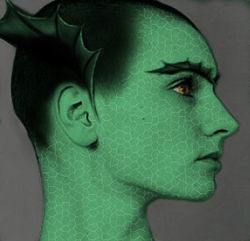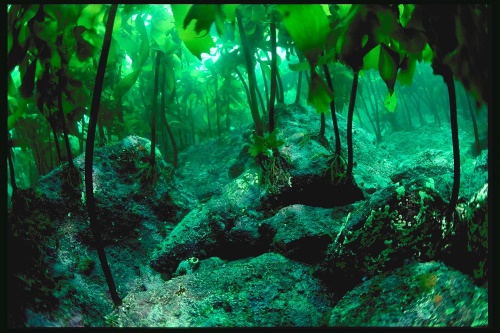Drexi: Difference between revisions
Sal Taybrim (talk | contribs) (edited history and pictures on the homeworld. Part of the Excalibur's mission expansion of this species information) |
No edit summary |
||
| Line 1: | Line 1: | ||
{{UC}} | {{UC}} | ||
{{Template:ILI Restricted| | {{Template:ILI Restricted| | ||
image = [[Image: | image = [[Image:Drexi.jpg|250px]]| | ||
fedstatus = Neutral| | fedstatus = Neutral| | ||
4letter = DREX| | 4letter = DREX| | ||
Revision as of 09:40, 30 September 2015
| This article is undergoing an expansion or major revamping. However, you are welcome to assist in its construction by editing it as well. Comments regarding possible improvements are welcome on the articles talk page. |
| Intelligent Lifeform Index |
|---|
| Drexi | |
|---|---|

| |
| Four Letter Code | DREX |
| Federation Status | Neutral |
| Planet of Origin | Drexallis |
| Encountered | ? |
| T/E Rating | T0/E0 |
| Current Tech Level | P |
| List of Named Drexis | |

| |
Full ILI Gallery • Permitted Species Gallery | |
Home System
- Quadrant: Beta
- Location: Afehirr sector (coordinates B26-0005-1300)
- Proper Name: Drexiquotal System
- Star: It orbits a class G (Yellow) star
- Distance from Star: it's orbit is approximately 212 million km
- Companions: It is the 3rd of 5 planets in the system
Home World
- Proper Name: Drexallis
- Diameter: 22,782 km (14,156 miles)
- Gravity: 1.16 standard gravity with a density of 3.6
- Axial Tilt: 14.7%, with normal seasonal changes
- Orbital Period: ??? days
- Rotational Period: ?? hours
- Classification: M
- Surface Water: 69%
- Atmosphere: 0.88% is a standard pressure with 72% nitrogen, 23% oxygen, 3% other gases, 2% trace chemicals
- Climate: Mainly a green hued ringed planet comprised of lush forests and swamps, with few areas of open water or oceans.
- Population: Just over ?? million
History
The Drexi race achieved success in technological development early in their history. A methodic and curious race, the Drexi advanced extremely quickly through what humans would consider the ‘bronze’ and ‘iron’ ages. Coupled with the fact that the Drexi are loathe to start large scale wars, they found limitless expansion possibilities across their lush planet.
While not warlike, the Drexi were not above selfish foibles. They overtaxed the ecology of their planet which caused wide scale retribution in the form of horrific storms and natural disasters. With a 50% casualty rates across the entire population over fifteen years, it was considered the darkest time in the race’s history. Coming out of it, a fledgling idea of 'balance with nature' grew into a full blown cultural phenomenon.
Drexallis has continued to quickly advance its technology, however new Drexi technology is focused on a balance between itself and nature, with sustainability for both.
The Drexi ventured to the stars some 800 years prior, however most of their space-faring focus has been on the preservation and protection of their own homeworld rather than the colonization of others. They find the Erscyne Alliance a fortunate happenstance for trade and communication.
Government
Description
Member of this race have webbed feet and are good swimmers, but breathe air and cannot exist below the surface indefinitely (but can hold their breath for a very long time). They are shorter than most humans and tend to be stockier as well. This body type helps them maintain buoyancy so that they naturally float.
Drexi are a short, solid race. They have thick skin that sheds water easily. It has a scaled appearance, but feels more like snake skin than fish scales.
Drexi coloration runs from pale green to deep forest and dark blues. Lighter skin tones are often seen in the northern areas of the planet, where the deepest skintones are evident at the equator. Drexi have short, thick bristly hair that ranges from bright white to dark black, with many tones of grey in between. On Drexallis, having silver hair is a sign of being moon blessed – it is considered a mark of great beauty for both sexes.
They have short fin-like protrusions on the sides of their face, above the ears. These serve to keep their hair pinned back while swimming. Similar fin-like protrusions are repeated on a much smaller scale above the eyes where humans have eyebrows. These will funnel water away from the eyes when a Drexi emerges from the water. While most offworlders never see it, Drexi also have a short vestigial fin running down their spinal column.
Drexi have cartilaginous flaps on their ears and nose to close off these areas from water. They have small mouths and sharp cheekbones, offset by wide amber eyes that can run anywhere from bright gold to dark brown.
Drexi have webbed feet, and dislike wearing shoes when on their homeworld. They have slight webbing between their fingers as well, and often wear special swimming gloves to augment this when they know they will be in the water.
Physiology
Psychology
Religion
Mythology
Society
Lots of plant and animal life live here, where the people live up in the trees and away from the water. They always return to the water for food and recreation, however.
Culture
Drexi culture is based on an age hierarchy. Families are multi-generational and elders are respected as keepers of wisdom and sources of information.
Most Drexi take three bondmates in their lifetime – this is true for both sexes.
A young Drexi is paired with an Elder for their first bond. The elder is expected to be a friend and mentor to the youth. This pairing strengthens bonds across generational lines, and provides a bond for the youth to mature into. This relationship may or may not be romantic – different tribes view the relationship in different ways, but there is no strict taboo for or against mating.
When a Drexi reaches their middle ages, they take their second bondmate. This mate is almost always similar in age to them. This relationship is often the primary bond for having offspring
When a Drexi becomes an Elder, they take a youth as their third bondmate and thus the cycle continues. Now they become the mentor, teaching the youth everything they have learned.
Drexi children are often reared by the elder parents in the family unit. Middle aged Drexi are often called to serve their tribe in various roles – both on and off world. Youth and Elders tend to stay in the tribe and provide the foundation for raising children. With each Drexi having multiple bond connections within the tribe there is a strong sense of children being raised by the entire community. This makes the Drexi capable of working with one another and bonding with their own kind easily.
Customs
Technology
Military
Federation Intelligence Files
Sources
This is an original Starbase 118 species created by the crew of the USS Excalibur-A.
| SPECIES PROFILE UPDATED This profile was revised by the Species Development Committee. |
REV 239209.30 | |||
| Please add any new information discovered during the course of a mission or shore leave. | ||||
| SB118-SDC | ||||

